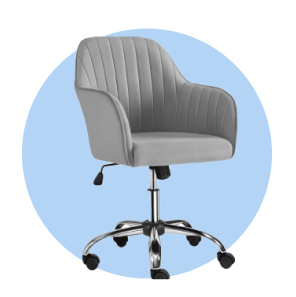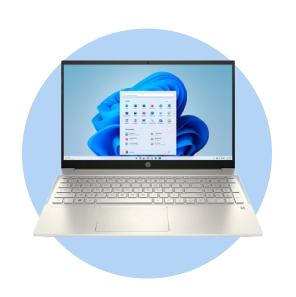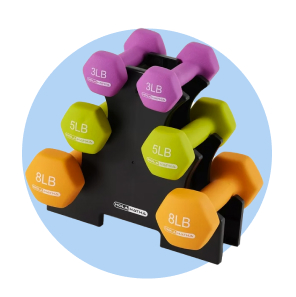
Printer Paper Weights: A Guide for Printers, Copiers & More
Choose the right thickness & quality
In the world of office supplies, “printer paper weight” is one of the most mystifying terms you’re likely to come across. A 24-lb ream of paper might weigh no more than five pounds. A 54-lb sheet can be thicker than an 80-lb one. A piece of bond paper and a piece of copy paper are the same thing—except when they’re not. It’s enough to make even a brave worker pine for a paperless office.
While paper weight is a complicated topic, it’s easy to understand once you master a few key ideas. With the right terminology and a little math, you’ll be able to tell bonds from covers, a 20-lb ream from a 24-lb ream and a basis size from a sheet size. This paper weight guide will help you choose the perfect material for printing and copying all kinds of different documents, from everyday office work to fancy invitations.
If you need to stock your workplace with high-quality paper, you should learn more about how Walmart Business can help you today.

What is paper weight?
What is paper weight? Simply put, it’s a way to measure paper thickness. Usually—but not always—higher weights mean thicker paper. As an easy example, suppose you’re buying office supplies at a store and see two reams of 8.5 x 11″ printer paper for sale. One package reads 20-lb, while the other reads 24-lb. The 24-lb paper will be slightly thicker and heavier than the 20-lb. Thicker paper is more durable than thinner paper and may be more pleasing to the touch.
To understand printer paper weight, consider how paper gets from a factory to a store. Paper starts out in uncut sheets. The dimensions of those sheets determine a paper’s “basis size.” For example: 8.5 x 11″ paper has a basis size of 17 x 22″. Manufacturers then cut these sheets into four equal pieces.
Just as each type of paper has a basis size, it also has a basis weight. Manufacturers determine this value by weighing 500 sheets of basis size paper. If these 500 sheets weigh 20 pounds, then the final product will be 20-lb paper. If they weigh 24 pounds, the final product will be 24-lb paper and so forth.
Remember that not every type of paper has the same basis size. That’s why, in certain cases, thicker paper can have lower weights than thinner sheets. This is also why it’s particularly useful to know about three common types of paper.
- Bond paper, also called printer or copy paper, is the thinnest of the bunch and ranges from 20-lb to 32-lb.
- Text paper, also called offset or book paper, can be either the same thickness as bond paper, or thicker. A 60-lb text paper, for example, is equal to a 24-lb bond paper. Text paper ranges from 40-lb to 100-lb.
- Cover paper, also called cardstock, can be either the same thickness as text paper, or thicker. A 40-lb cover paper, for example, is equal to a 70-lb text paper. Cover paper ranges from 40-lb to more than 100-lb.
If this all sounds confusing (and it is), consider using metric measurements instead. In Europe and Asia, paper manufacturers use a much more straightforward “grams per square meter” (GSM) measurement. Higher GSM always translates to thicker paper.

How to select the right printer paper weight
For printing common office materials, any paper weight between 20- and 32-lb is fine. Higher weights may be better if you need to impress clients and lower weights may be better if you don’t need the documents to last long, but they’ll all work with just about any printer.
Along those lines, you may find some resources that draw inconsistent distinctions between printer paper weight and copy paper weight. Some sources claim that copy paper is 20-lb and printer paper is 24-lb, while others suggest that the weight doesn’t matter as much as the feel of the material. For most documents, the differences are not worth worrying about.
There’s also no evidence that different paper weights affect a printer’s performance or longevity, provided that you stay within recommended thickness parameters. Look up your printer’s paper loading capacity, which will tell you the maximum weight it supports.
To find the right copy paper for your workplace, read From Copy Paper to Cardstock: The Business Owner's Guide to Buying Paper.
Common paper weights
The differences between printer paper weights can be subtle, especially at the lighter end of the scale. Here are a few common weights you might see in the workplace:
20- to 24-lb paper
If there’s such a thing as a standard paper weight in the business world, it’s either 20-lb or 24-lb. While 24-lb paper is just a touch thicker (and often a bit more expensive), both styles are well-suited to printing just about any kind of everyday document. Choose 20-lb or 24-lb paper if you need an inexpensive, disposable printout.
28- to 32-lb paper
For documents that need to be just a little more durable, 28-lb or 32-lb paper is a good choice. This paper weight works well for resumes, daily menus or anything that might go in front of an important client.
80-lb cardstock
When you need durable documents, you should look into cardstock. The 80-lb weight is particularly good for outdoor flyers, as it’s more resistant to wind and rain than bond paper. Thin enough to fold but thick enough to hold its shape, 80-lb cardstock is also a good material for flyers and pamphlets.
100-lb cardstock
Buy some 100-lb cardstock if you need to print a sheet of business cards or a fancy invitation. Somewhat thicker and more rigid than its 80-lb counterpart, 100-lb cardstock can maintain its integrity in a pocket, wallet or envelope.
To learn more about other common paper sizes, check out 7 Types of Paper & What They’re Used For.
Purchase your paper from Walmart Business
Once you know what printer paper weight your organization needs, look for it at Walmart Business. From big reams of 20-lb paper to colorful 100-lb cardstock, you can purchase materials to print handouts, flyers, business cards and more. When you sign up for a free Walmart Business account, you’ll be able to buy goods in bulk and view your full in-store and online order history. You can also share an account among multiple users and save your organization’s preferred payment methods.
If you already have an account, then upgrade to a Walmart Business+ membership. With it, you’ll get free shipping from Walmart.com1 and free delivery from local Walmart stores with a $35 order minimum.2 On orders of $250 or more, you’ll also earn 2% back in Walmart Business Rewards.3 Over the course of a year, these benefits could save your business more than $500.4
1 Excludes most Marketplace items, freight and certain location surcharges.
2 Rewards can only be used toward future purchases on Walmart Business. Additional terms apply.
3 Excludes most Marketplace items, freight and certain location surcharges.
4 Savings based on 1 free $35+ delivery order vs. $9.95 fee and 1 free shipping order under $35 vs. $6.99 fee biweekly, plus 2% Walmart Business Rewards on monthly order >$250 (average value of $400).
Exciting news awaits
Hear firsthand about new products, features & promotions.
By clicking submit, you agree to receive emails about Walmart Business and acknowledge you have read and agreed to our Terms of use and Privacy Policy.











